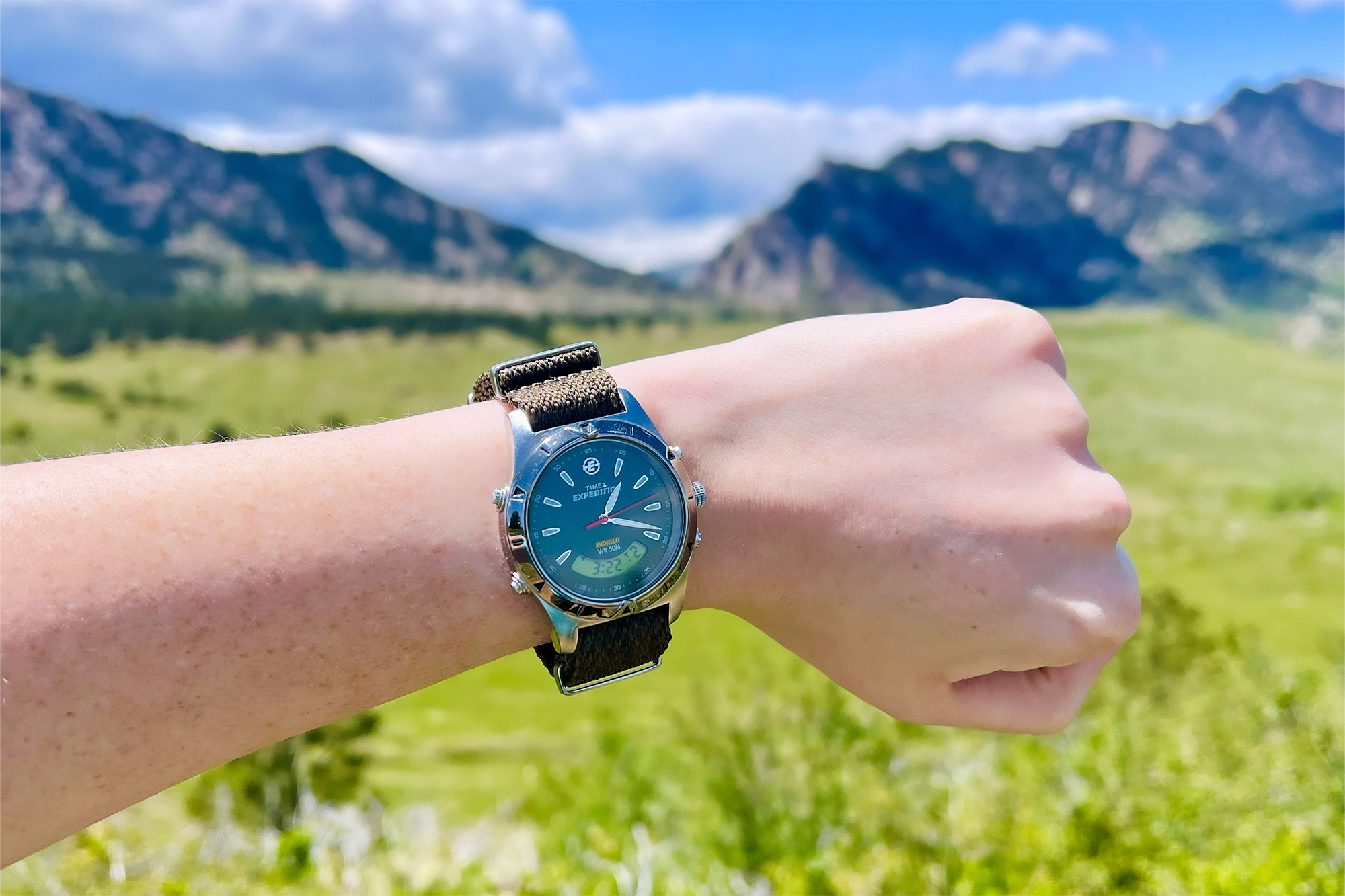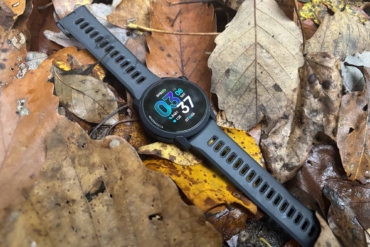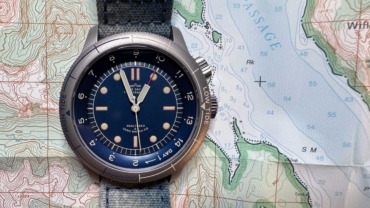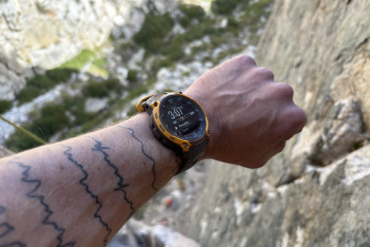I was talking with a friend about his watch a few years ago when I was fairly new to the hobby of watch collecting. It had been a gift from his wife for their wedding back in 2017 and he wore it every day. The original leather strap had become worn and a bit cracked in some places near the buckle. You could tell it got a lot of wrist time just by looking at it.
“I love the watch,” he told me, “but the strap is in such bad shape. I don’t know how much longer I can wear it.”
So, I asked him what other strap options he was considering for the watch. He looked at me with a slightly bewildered expression. “The strap comes … off?” As further conversations with other budding watch enthusiasts have revealed since then, he’s certainly not alone in this realization.
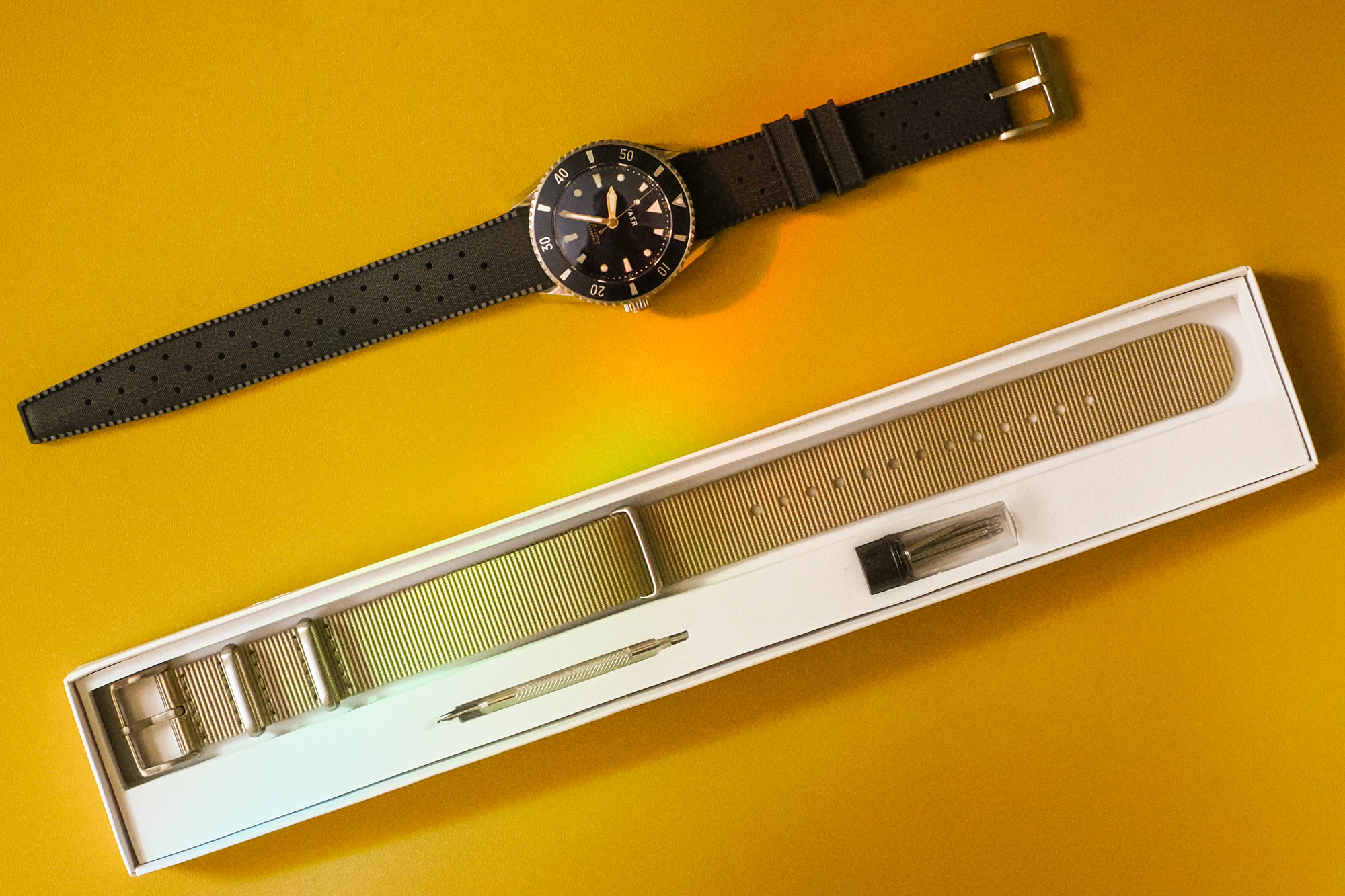
Like any hobby, watches have a typical learning curve — the period one spends understanding the lingo, the specs, and one’s own preferences. But watches are tricky. For such a small and unassuming object, there is a surprising depth to the vocabulary that can cause confusion and even intimidation for newbies. Unfortunately, this can create a barrier for those interested in breaking into this niche.
However, knowing the terminology helps enthusiasts connect with other collectors and is an important part of horological culture. It allows enthusiasts to learn about their likes and dislikes and aids in finding the perfect watch and, by extension, watch strap.
Whether you’re in the camp of folks who didn’t know most watch straps can be removed or you’re a seasoned collector, learning more about this sometimes overlooked aspect of watches can be beneficial.
Swapping out straps is a great way to keep your watches feeling fresh and can stretch the versatility of a smaller collection by allowing the wearer to mix and match styles for their everyday looks. They open up many new possibilities in each watch, as every bracelet or strap will cause it to wear differently on the wrist.
This beginner’s guide provides an overview of the main types of watch straps a beginner should know, including the pros and cons of each choice. Though certainly not an expansive list of all things strap-related, this will get the budding collector started on the research journey.
Bracelets
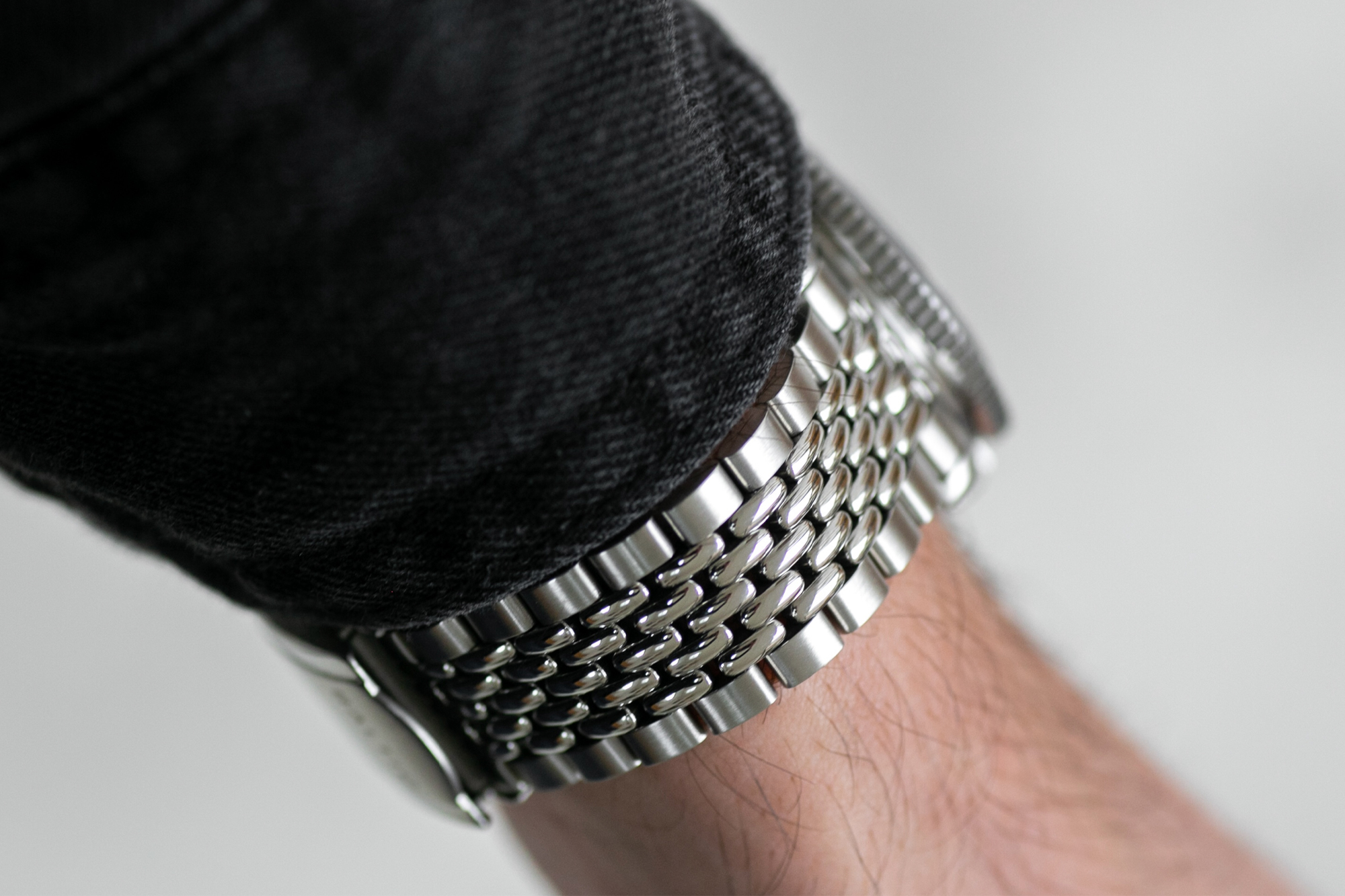
Bracelets are a favorite among many in the watch community. Sporty and practical, they have a strong wrist presence and add an extra bit of shine. Bracelets can be made out of a variety of metals, but stainless steel is the most common. Beads of rice and jubilee styles tend to provide the most customizable fit (as the smaller links allow the bracelet to contour to the wearer’s wrist), while a three-link option still offers sizing flexibility while being universally flattering.
While bracelets need to be sized to fit the owner’s wrist, many have quick adjustment or flexibility of a few millimeters built in. This allows for modest fluctuations in wrist size or, in some cases, for the band to be worn over a wetsuit.
Pros: Bracelets are waterproof, meaning you can take them as deep as the water-resistance rating on your watch will allow. You don’t have to worry about sweat ruining the bracelet, as it could with leather straps, and you don’t need to take it off in the rain. The sense of heft can give a watch of any price point an air of quality. But some view this feature as a drawback, bringing me to my next point.
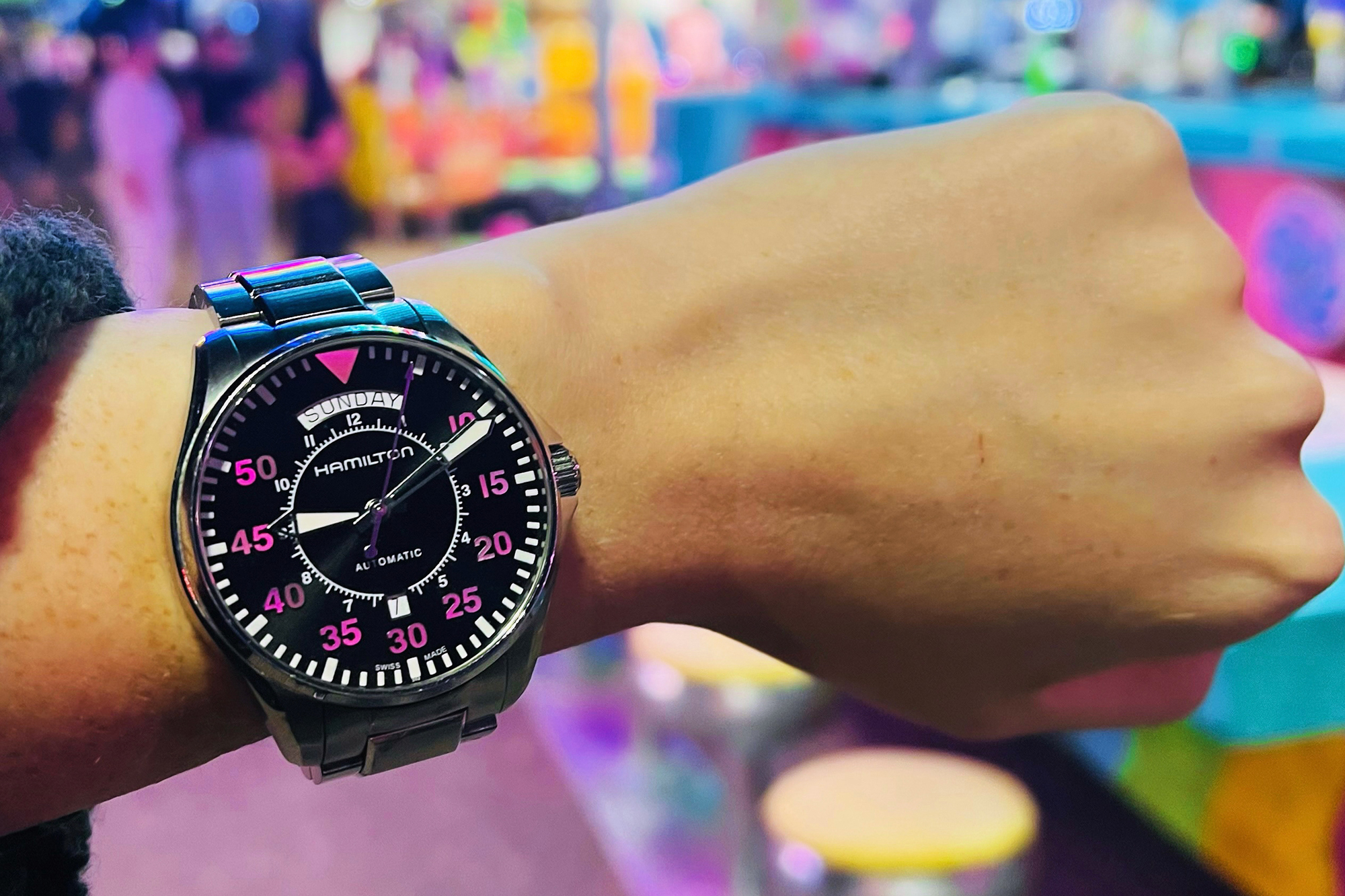
Cons: They can often be heavy. Depending on the style, some offer a quick-adjust feature that allows the wearer to resize on the fly to accommodate small fluctuations in wrist size throughout the day, but many do not have this setting. This means that small amounts of wrist swell can lead to a pretty uncomfortable fit.
They also are prone to scratches, especially near the clasp where the wrist rests on desks, tables, and laptops. Additionally, though not overly complicated, resizing your own bracelet requires specialized tools.
So, factoring in the price of a bracelet resize at your local jeweler may be wise. Fortunately, these adjustments typically cost around $25-35, depending on the style. Some brands will even ask about your wrist circumference during the ordering process and size the bracelet before you receive it.
My pro tip? When purchasing, brands will often offer buyers the choice of their watch on either a bracelet or strap. It tends to make the most financial sense to purchase the watch on the bracelet out of the gate, and add the brand’s other strap options to your collection later.
The reverse (strap first, then bracelet) is usually more costly, and buying a standalone bracelet from a brand later will run up that bill at least a couple hundred dollars.
Leather Straps
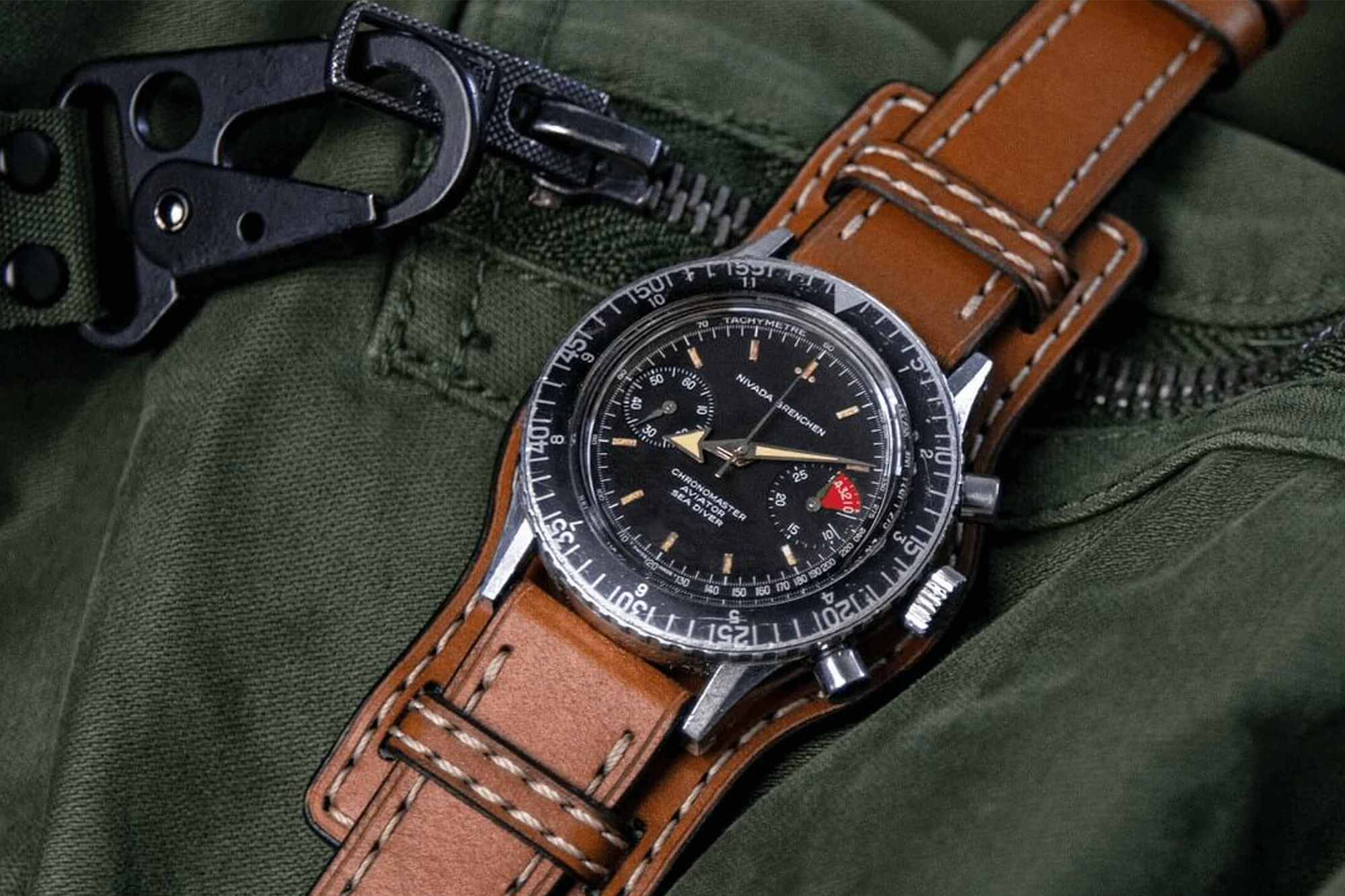
There is something timeless about the leather-strapped wristwatch. While bracelets give a watch a sporty vibe, a watch on a leather strap is simply a classic. There are a lot of types of leather straps, with terminology and patterns deserving their own coverage, but there are two unique styles worth noting here: Bund and rally straps.
A theme in the watch world is the ever-present link to military necessity, and Bund straps originated during World War II. Fighter pilots often experienced both extreme heat and extreme cold in the cockpit, and this led to a need for a barrier between the metal caseback of the watch and the pilot’s wrist by way of a thick piece of leather.
People recognize a Bund strap for its significant wrist presence. If you’re looking to make a statement, this is it. These straps haven’t yet entered the standard repertoire of most enthusiasts, but a move toward the retro in recent years makes me think we’re not far off. This option is a great choice for someone who doesn’t mind their strap getting more attention than the watch it’s supporting.
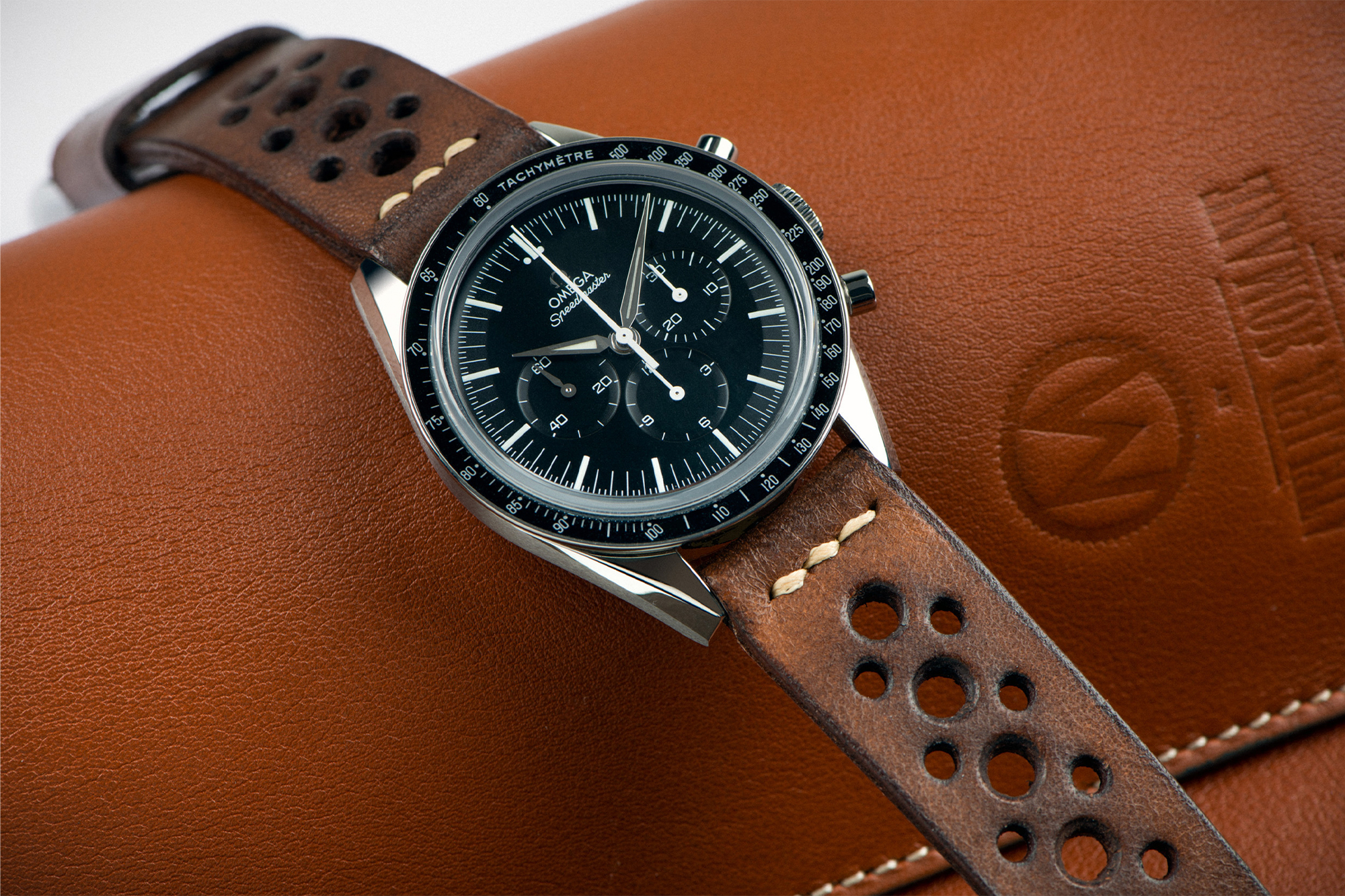
Rally straps trace their roots back to the 1960s and get their name from the punched-out holes in racing vehicles (to reduce weight) as well as racing gloves of a similar design. These leather straps feature a series of holes throughout the length, which makes them more breathable than traditional straps, and reduces moisture build-up.
More than only function, these straps harken back to the golden age of racing, and are great ways to show off both an affinity for watch collecting as well as a love of motorsports.
Pros: Leather straps are much lighter than bracelets. They can also be adjusted immediately without tools, which allows the wearer to resize continually throughout the day. Depending on the material, they are much less prone to scratching than bracelets, which can make them a good choice for those who like to leave their watch on while working at a desk.
Cons: While leather is great for the office or other events, it’s not a great option for hiking, biking, and general outdoor adventures. Leather is typically fine for hand-washing and rain, but usually shouldn’t be submerged in water for prolonged periods of time. Sweat and oils from the skin can be hard on leather, in a way it isn’t for other types of materials.
Though not a point of particular importance, it should be noted that leather can sometimes require a bit of forethought in terms of someone’s overall ensemble. Making sure the strap matches the belt and shoes can go a long way in terms of tying an outfit together and keeping the look sharp.
Rubber Straps
One of the most rugged choices for your wristwatch would be a rubber or silicone strap. Due to their durability and waterproof nature, these are common with dive watches.
For dive watches, look for a secure clasp with quick adjust-on-the-go designs, especially if you plan to wear the watch while actually diving. This allows the user to adjust the size for wear over a wetsuit if needed and enhances the authenticity and utility of the dive watch.
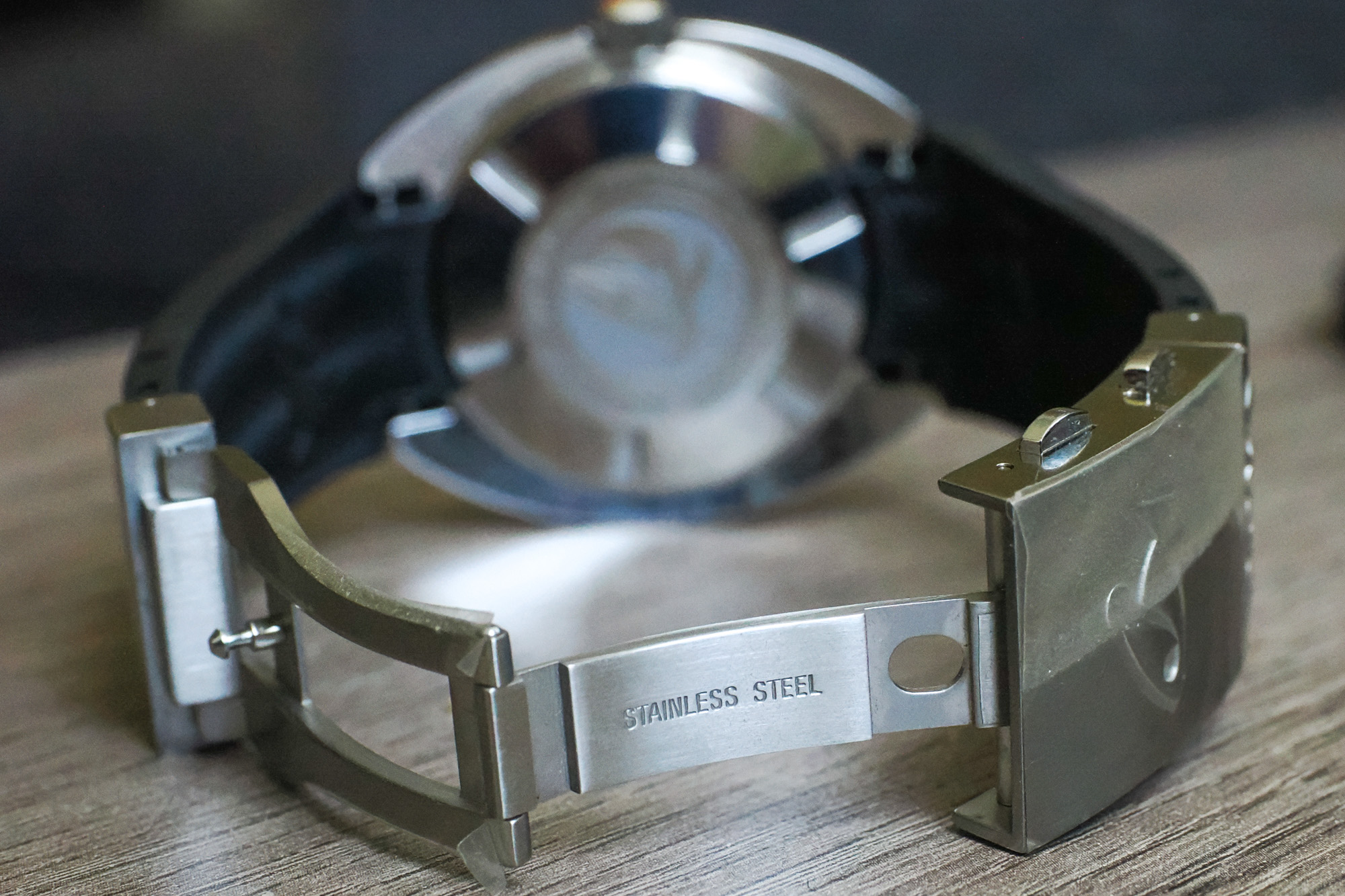
Pros: Waterproof and weatherproof, these styles are great for when your adventures take you into harsh conditions. Some rubber straps also offer the wearer the ability to cut the strap to size, which means the wearer can find an exact fit by modifying the strap with a pair of scissors or a knife. These also tend to have a quicker break-in period compared to leather straps.
Cons: Rubber straps can be difficult to find as an option when buying a new watch. While many brands will offer buyers a choice between leather straps and bracelets during the checkout process, rubber straps are typically more common only in the field or dive watch category. If you want to sport your new purchase on a rubber strap, you might need to look into aftermarket options. Also worth noting is that cut-to-fit straps require commitment. Once cut, they can’t be un-cut!
Canvas Straps
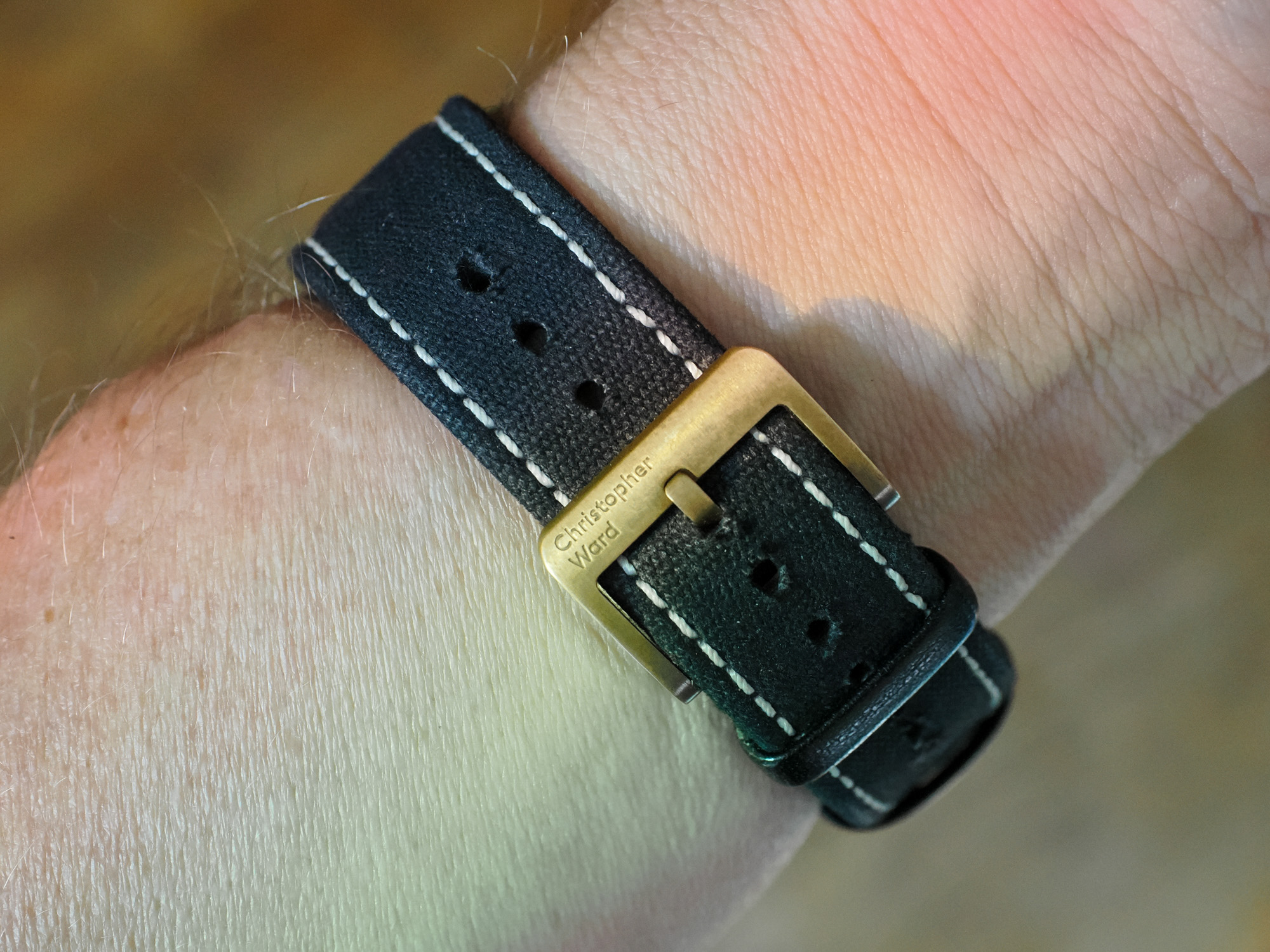
Canvas watch straps offer a classic and durable option for watch straps that handle bad weather better than leather. But in terms of appearance, while still rugged, they are a little more refined than the nylon straps listed below. While not necessarily more durable than nylon, canvas watch bands tend to feel more structured and offer more details than nylon. Thus, while still relatively casual, they can stand up to somewhat formal use, especially in muted colors.
Pros: Canvas straps have a classic, rugged appearance and can handle water without damage.
Cons: Canvas is less formal than bracelets or leather, yet not as durable as NATO straps listed below.
Nylon Watch Bands
When it comes to durability, nylon is about as tough as it comes. Climbers use similar material for webbing, so you know this stuff can take a beating. But while nylon bands are legendary when it comes to toughness, they lack formal appeal and tend to be somewhat floppy and unstructured. Thus, you can expect to find them mostly on field watches or other lighter watches.
It is worth noting that most NATO straps (listed below) also use nylon, but not all nylon straps are NATO-style.
Pros: Nylon is incredibly durable and not affected by water. While it is absorbent and can get wet, it will quickly dry.
Cons: Nylon watch bands are quite casual or tactical in appearance. They also do not have much structure.
NATO Straps
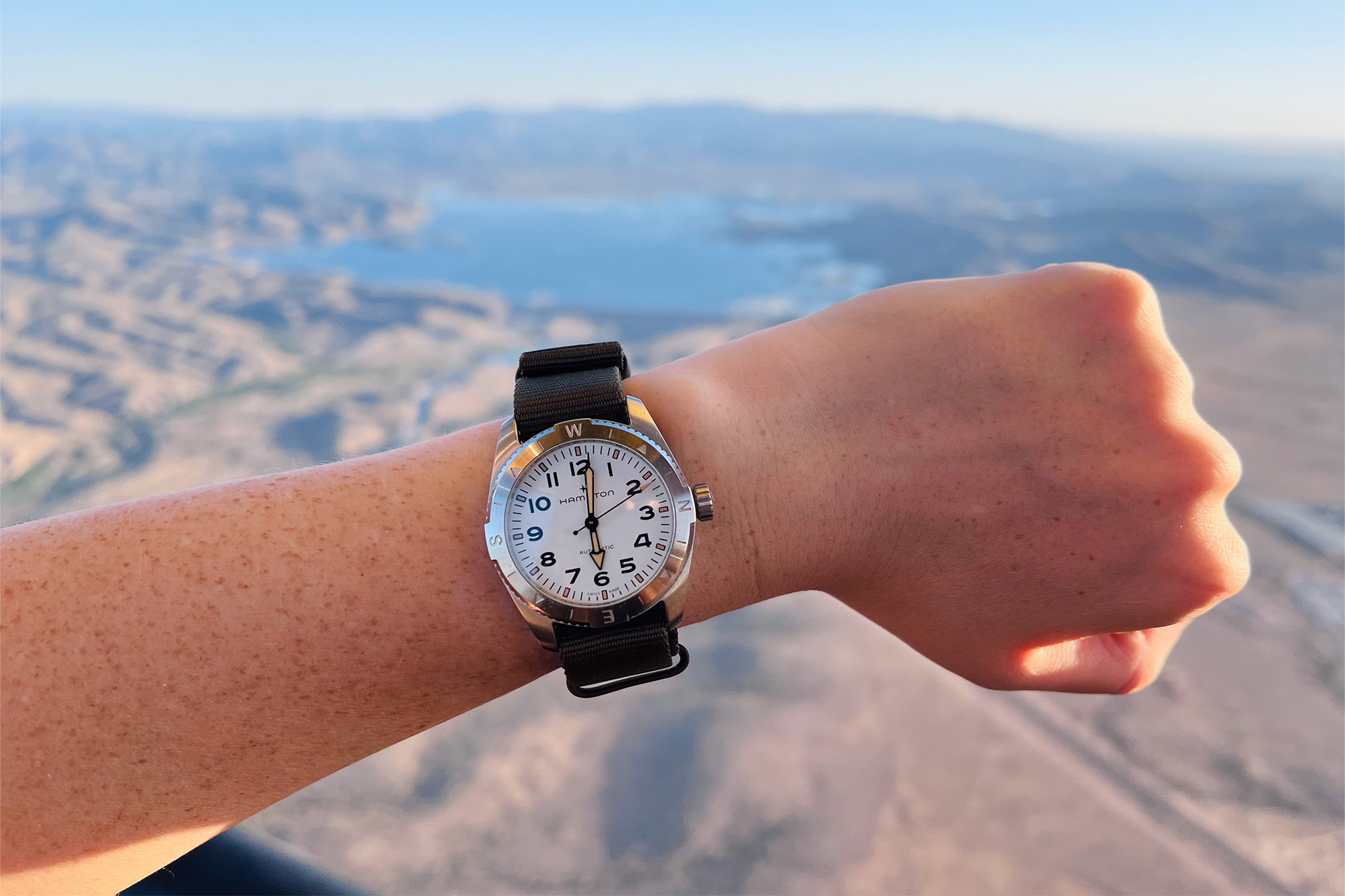
Yes, that NATO … kind of. Similar to the Bund mentioned above, military practicality roots the NATO strap. Originating in 1973 to meet the specifications of the British Minister of Defence (MoD) standards for the British Army, this nylon strap can handle nearly any situation. It was affectionately nicknamed the G-10 in the past, as Special Forces were issued the strap after completing Form G-1098. Now, it’s widely known as a NATO.
As can be imagined, leather isn’t well suited for humid climates, and bracelets are at high risk for glare in the field. Two-piece straps seem convenient until a broken spring bar could mean a lost watch in a situation where time is mission-critical.
The NATO strap addresses all of these concerns. The design makes it an easy fit for any wrist, as the two keepers allow wearers to double-back the excess material or loosen it to fit over dive suits or military uniforms. In the event of a spring bar failure, the watch stays attached to the other side of the strap, mitigating the risk of a costly replacement.
The original MoD-issued straps had very strict specifications. Each NATO was admiralty gray in color, 20mm in width, and made of 1.2mm thick nylon. Today, though, NATO straps have moved away from such stringent requirements and come in a variety of colors and sizes. There are even variations on the double-pass design that made NATOS so practical in the first place.
Single-pass NATOs do away with the additional piece of fabric under the buckle, thus leading to a slimmer wrist profile. There are also leather NATOs that offer many of the perks of a traditional nylon option with a hint of vintage class.
Pros: NATOs tend to appeal to those who need something a little more robust than the average two-piece strap. Nylon options are great choices in the summer due to their ability to take a dive, and they offer peace of mind to the wearer who tends to wear their watches hard enough to risk a broken spring bar.
They’re the ultimate hiking, camping, and all-around adventuring watch. Due to their design, they fit a large variety of wrist sizes, so finding the perfect fit isn’t difficult.
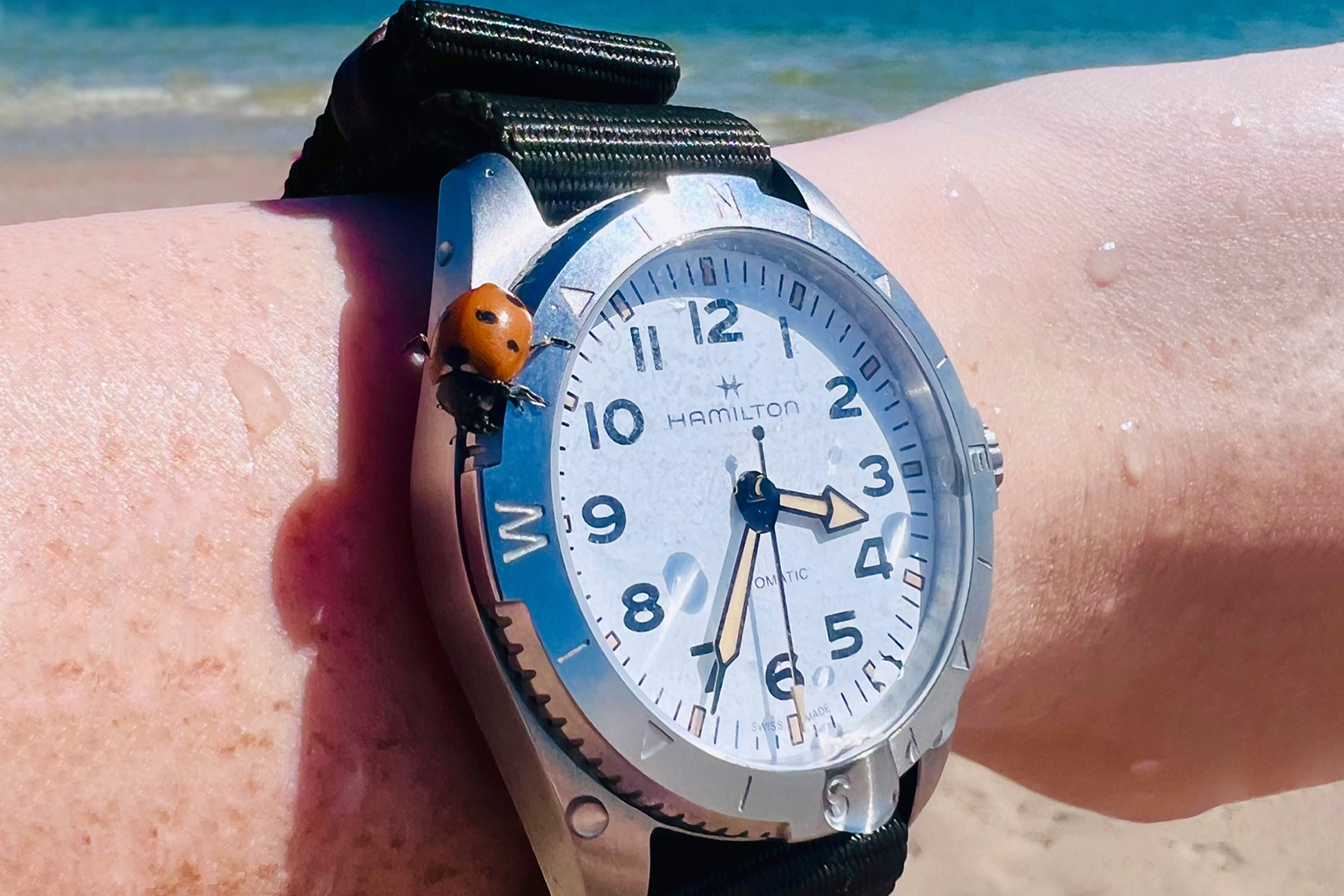
Cons: The downside to these is that they tend to look their best outside … they won’t be the best choice for the office or other more formal occasions. They also add fairly significant height to the overall appearance of the watch as a product of their design.
In standard, double-pass NATOs, there are two pieces of nylon under the caseback, keeping the watch secure. This can often add around 2 mm or more to the overall height off the wrist, increasing the risk of knocking your watch into the occasional door frame. If you prefer a slimmer profile under a shirt sleeve, this might not be the strap option for you.
However, in case you need further proof of their practicality and usefulness in the field, wearers should look no further than James Bond, who (in the Daniel Craig portrayal) cuts a classy look as an MI6 spy whose watch of choice is an Omega Seamaster with a black and gray NATO affectionately known in the watch community as “the Bond.”
Watch Straps: An Easy Aesthetic, Functional Change
Overall, straps can greatly affect the aesthetic and functionality of your watch. Beginning watch enthusiasts should feel empowered to customize the fit and function of their pieces by experimenting with strap styles that work for them. Purchasing an inexpensive spring bar tool and watching a few videos of spring bar removal online will get you started on the right path.
Watches are a weird and wonderful world unto themselves. They often reflect the wearer, and our choices can be a way of sharing aspects of our personalities or values. So, the next time you’re tempted to purchase a brand-new watch, first try swapping its strap. It just might be the new look you need … and it’s a whole lot cheaper, too.
